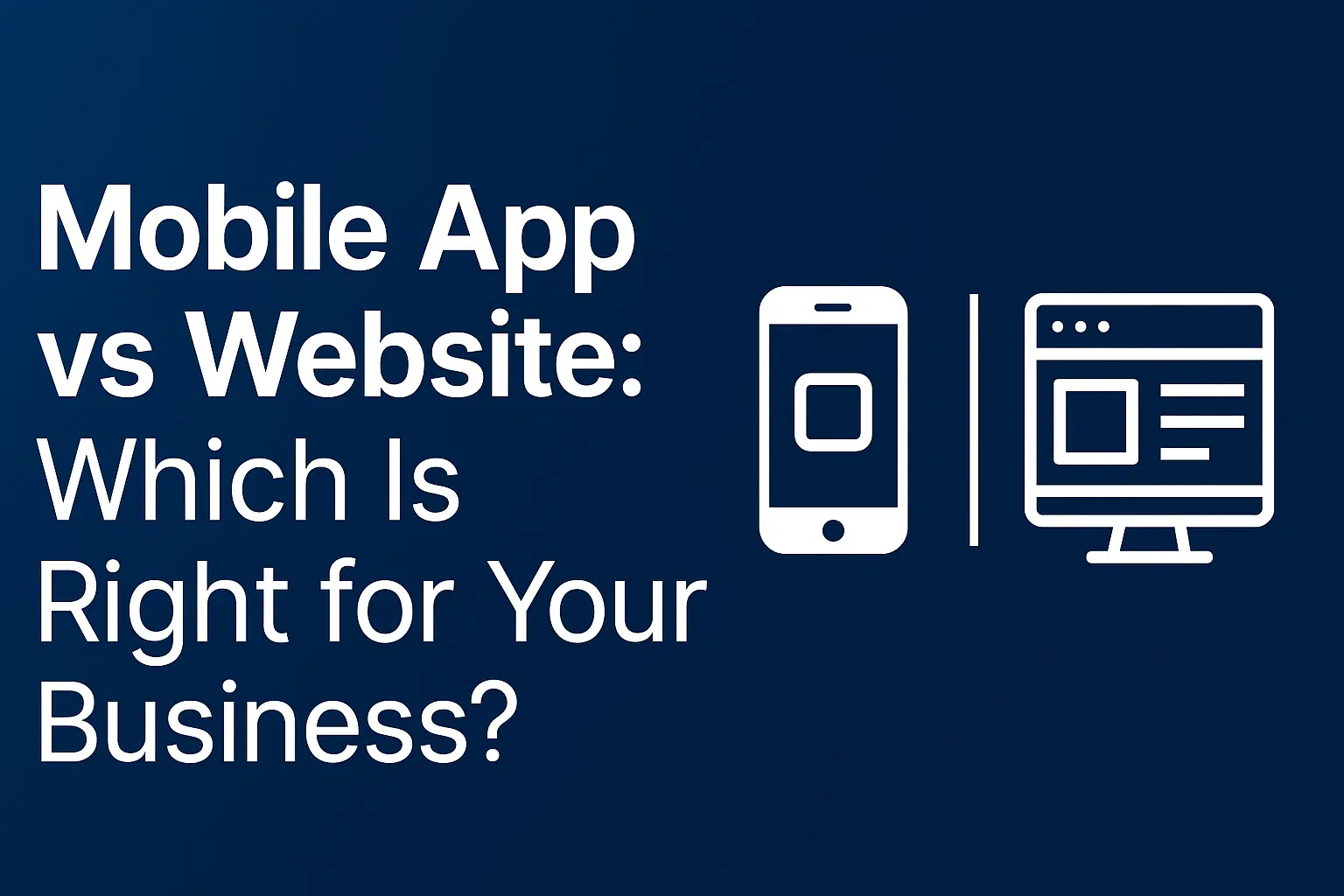The Key Difference: Purpose and Engagement
At their core, both websites and mobile apps help customers interact with your brand. The difference lies in how deep that interaction goes.
- Websites are built for visibility — to be found, browsed, and shared.
- Mobile apps are built for engagement — to create repeat usage, loyalty, and personalised experiences.
In other words: a website gets them in the door, but an app keeps them coming back.
When a Website Is the Smarter Choice
For most small to medium businesses, a high-quality website should be your first digital investment. Here’s why:
- 🌐 Visibility: Websites rank on Google — apps don’t. If your goal is discoverability, SEO beats the App Store every time.
- 💰 Lower cost: A well-designed site is typically 3–5× cheaper than a full native app.
- ⚙️ Instant updates: You can change content, products, or pricing without app-store approval delays.
- 📱 Responsive design: Modern websites adapt perfectly to any screen size, so you already reach mobile users.
In short: if you’re building awareness, promoting services, or generating leads, a professional website is the foundation you can’t skip.
When It’s Time to Build a Mobile App
Mobile apps shine when user experience and engagement are key. If your business needs deeper interaction, custom features, or offline access, an app may be the smarter investment.
- 🔔 Push notifications: Send instant updates, offers, and reminders directly to users’ phones.
- ⚡ Offline access: Apps can work even without internet — ideal for tools, checklists, or travel apps.
- 💳 Integrated payments: In-app checkout or subscription models streamline the customer journey.
- 🧭 Device integration: Apps can use GPS, cameras, and sensors for interactive experiences.
Apps are perfect for businesses focused on retention and personalisation — think fitness, delivery, loyalty programmes, or services that rely on frequent user contact.
The Hybrid Middle Ground: Web Apps
If you want app-like performance without the cost of separate Android/iOS builds, consider a Progressive Web App (PWA). PWAs run in browsers but feel like native apps — complete with offline mode and install prompts.
They’re ideal for startups and SMEs who want speed, functionality, and affordability. Many businesses we work with at Marbella Tech Solutions start with a web app before scaling to a native version once demand grows.
Cost and Maintenance: What to Expect
Building a custom app is a commitment. Initial development costs are higher, and updates require ongoing maintenance. A well-structured website, however, can evolve organically and stay fresh through regular optimisation.
| Feature | Website | Mobile App |
|---|---|---|
| Cost to Develop | Low–Medium | Medium–High |
| Time to Market | 2–8 weeks | 8–20 weeks |
| SEO Visibility | ✅ Yes | ❌ No |
| Offline Capability | ❌ No | ✅ Yes |
| User Engagement | Moderate | High |
What Most Businesses Should Do
Start with a responsive, high-performance website that builds brand authority and captures leads. Then, as engagement grows and user data shapes demand, explore an app that deepens relationships and automates experiences.
This approach minimises risk, maximises ROI, and gives your digital presence room to evolve naturally — without expensive rebuilds.
How Marbella Tech Solutions Can Help
We design custom WordPress websites and mobile apps that scale with your business. From first click to full integration, our goal is simple: help you pick the platform that fits your customers — and your future growth.
Need help deciding? Let’s review your goals, audience, and budget — we’ll build a clear roadmap for your next digital step.

